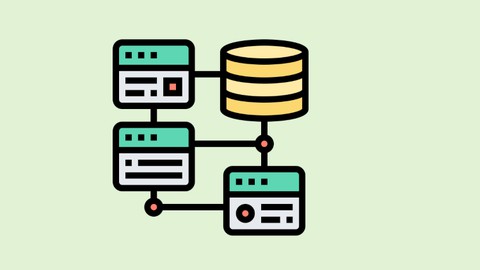
Introduction to Database Triggers with PostgreSQL
Introduction to Database Triggers with PostgreSQL, available at $19.99, has an average rating of 4, with 16 lectures, based on 1 reviews, and has 611 subscribers.
You will learn about Install PostgreSQL on Windows Install PostgreSQL on Macs Installing PgAdmin on Macs Connect to PostgreSQL with PgAdmin Restore a sample database Create a new table Populate a table Creating a trigger Manage Triggers This course is ideal for individuals who are Beginners to creating Triggers It is particularly useful for Beginners to creating Triggers.
Enroll now: Introduction to Database Triggers with PostgreSQL
Summary
Title: Introduction to Database Triggers with PostgreSQL
Price: $19.99
Average Rating: 4
Number of Lectures: 16
Number of Published Lectures: 16
Number of Curriculum Items: 16
Number of Published Curriculum Objects: 16
Original Price: $19.99
Quality Status: approved
Status: Live
What You Will Learn
- Install PostgreSQL on Windows
- Install PostgreSQL on Macs
- Installing PgAdmin on Macs
- Connect to PostgreSQL with PgAdmin
- Restore a sample database
- Create a new table
- Populate a table
- Creating a trigger
- Manage Triggers
Who Should Attend
- Beginners to creating Triggers
Target Audiences
- Beginners to creating Triggers
A database trigger is procedural code that is automatically executed in response to certain events on a particular table or view in a database. The trigger is mostly used for maintaining the integrity of the information on the database. For example, when a new record (representing a new worker) is added to the employees table, new records should also be created in the tables of the taxes, vacations and salaries. Triggers can also be used to log historical data, for example to keep track of employees’ previous salaries.
A PostgreSQL trigger is a function invoked automatically whenever an event associated with a table occurs. An event could be any of the following: INSERT, UPDATE, DELETE or TRUNCATE.
A trigger is a special user-defined function that binds to a table. To create a new trigger, you must define a trigger function first, and then bind this trigger function to a table. The difference between a trigger and a user-defined function is that a trigger is automatically invoked when an event occurs.
PostgreSQL provides two main types of triggers: row and statement level triggers. The differences between the two are how many times the trigger is invoked and at what time. For example, if you issue an UPDATE statement that affects 20 rows, the row level trigger will be invoked 20 times, while the statement level trigger will be invoked 1 time.
You can specify whether the trigger is invoked before or after an event. If the trigger is invoked before an event, it can skip the operation for the current row or even change the row being updated or inserted. In case the trigger is invoked after the event, all changes are available to the trigger.
Course Curriculum
Chapter 1: PostgreSQL Setup
Lecture 1: Introduction
Lecture 2: What is PostgreSQL
Lecture 3: Installing PostgreSQL on Windows
Lecture 4: Installing PostgreSQL on Macs
Lecture 5: Installing PgAdmin on Macs
Lecture 6: Connecting to PostgreSQL with PgAdmin
Lecture 7: Restore a sample database
Lecture 8: Create a new table
Lecture 9: Populate a table
Lecture 10: Query Table
Chapter 2: Database Triggers
Lecture 1: Overview of PostgreSQL Database Triggers
Lecture 2: What are Triggers
Lecture 3: Creating your first trigger : Part 1
Lecture 4: Creating your first trigger : Part 2
Lecture 5: Creating your first trigger : Part 3
Lecture 6: Managing Triggers
Instructors
-
Bluelime Learning Solutions
Making Learning Simple
Rating Distribution
- 1 stars: 0 votes
- 2 stars: 0 votes
- 3 stars: 0 votes
- 4 stars: 1 votes
- 5 stars: 0 votes
Frequently Asked Questions
How long do I have access to the course materials?
You can view and review the lecture materials indefinitely, like an on-demand channel.
Can I take my courses with me wherever I go?
Definitely! If you have an internet connection, courses on Udemy are available on any device at any time. If you don’t have an internet connection, some instructors also let their students download course lectures. That’s up to the instructor though, so make sure you get on their good side!
You may also like
- Best Cybersecurity Fundamentals Courses to Learn in March 2025
- Best Smart Home Technology Courses to Learn in March 2025
- Best Holistic Health Courses to Learn in March 2025
- Best Nutrition And Diet Planning Courses to Learn in March 2025
- Best Yoga Instruction Courses to Learn in March 2025
- Best Stress Management Courses to Learn in March 2025
- Best Mindfulness Meditation Courses to Learn in March 2025
- Best Life Coaching Courses to Learn in March 2025
- Best Career Development Courses to Learn in March 2025
- Best Relationship Building Courses to Learn in March 2025
- Best Parenting Skills Courses to Learn in March 2025
- Best Home Improvement Courses to Learn in March 2025
- Best Gardening Courses to Learn in March 2025
- Best Sewing And Knitting Courses to Learn in March 2025
- Best Interior Design Courses to Learn in March 2025
- Best Writing Courses Courses to Learn in March 2025
- Best Storytelling Courses to Learn in March 2025
- Best Creativity Workshops Courses to Learn in March 2025
- Best Resilience Training Courses to Learn in March 2025
- Best Emotional Intelligence Courses to Learn in March 2025






















